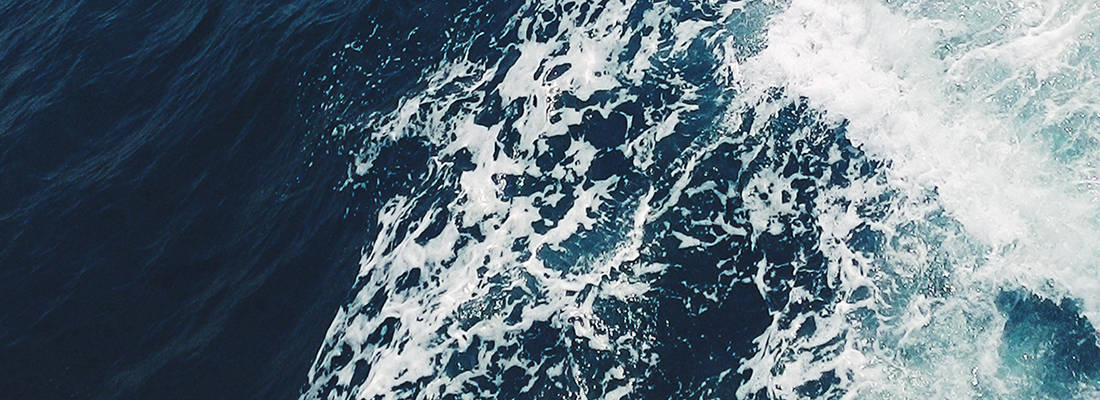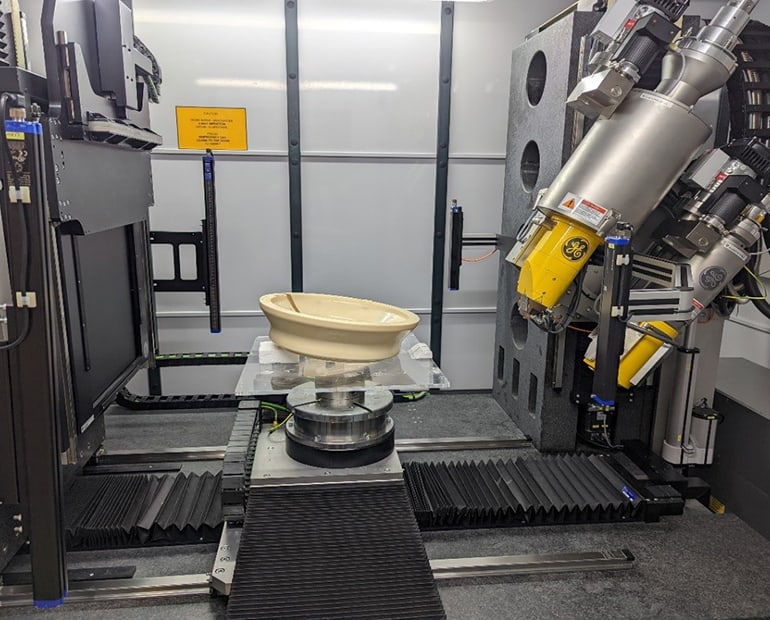
Porosity Analysis of TFI Marine SeaSpring using X-ray Micro Computed Tomography

Patented load reduction systems
Based in Blackrock, Co. Dublin, TFI Marine offers patented load reduction systems for a range of offshore mooring systems. These can aid in the long-term stability of aquatic installations such as those used in the wind energy generation sector and the aquatic farming industry. The TFI Marine SeaSpring can reduce peak mooring loads by 50%+, offering significant benefits for the entire mooring system including substantial reductions in mooring and deployment costs as well as ongoing operational costs. This requires the ability to cope with high, unpredictable loads, corrosive environments, temperature extremes and fatigue loading.
The SeaSpring is a key requirement in the successful growth of Ireland’s marine wind power generation infrastructure which will ensure energy security and environmental protection for generations to come. These products must be designed and manufactured to the highest quality standards to ensure that they can survive and function successfully in the extreme environment of the Atlantic Ocean. It is for this reason, that TFI Marine contacted SEAM for assistance in ensuring that their products are fit for purpose.
Equipped with in-built load and performance monitoring sensors, they can constantly update the users with data on the mooring condition, performance and lifetime forecasts, so any issues can be detected and remedied before they become critical. The SeaSpring is designed to suit individual platform and site requirements that are scalable to handle mega newton loads or any requirement of the marine based industries. TFI Marine is always keen to consult with customers on any project in order to determine the optimum mooring solution and, through collaboration with the SEAM Gateway Centre, success can be assured.
X-ray micro computed tomography analysis
The aim of the collaboration with SEAM was to investigate the integrity of the SeaSpring’s welded joints and also to assess the material density of the main component part of the SeaSpring system. These are critical parameters to ensure the long-term durability and reliability of the product, but they can be difficult to visualise and assess as they are deep within the component body.
At SEAM, the v|tome|x L 300 system was used to conduct x-ray micro computed tomography analysis to scan and examine the porosity of the provided sample. The v|tome|x L 300 is a highly versatile high-resolution system and enables 3D computed tomography (micro CT) and 2D x-ray inspection of all manner of components and customer product from circuit boards to food products. Using this technique, and the wealth of analysis software resources available at SEAM, product issues such as porosity, delamination, fracture, assembly problems, tolerance issues, non-destructive testing, reverse engineering and many more can be effectively resolved using micro CT.
The system is capable of handling large samples up to 50 kg and up to 500 mm in diameter with extremely high precision. In this instance, we were able to assess the TFI marine 400mm SeaSpring to determine the quality of the weld joints used to assemble the system.

1
Irish company
1
direct consultancy
>50%
reduction in peak mooring loads
“TFI Marine was delighted to find a facility in Ireland that could provide support of this kind to them and believe that support from SEAM will help them grow and create new and innovative products in the future. Without use of the SEAM’s CT scanner we would not have been able to validate the internal structure of our components. This the first time we’ve been able to see this and is a major step forward on the road to full commercialization.”
Edward Cook
Product Director, TFI Marine
The TFI Marine & SEAM Technology Gateway partnership
The biggest advantage of CT scanning using the v|tome|x L 300, is the ability to non-destructively inspect the entire extent of the weld joint and the surrounding assembly. The imaging and resolutions produced during the scan provided quality inspection images of the weld region. The resolution of the images attained was high enough to identify even small impurities in the raw material which typically deteriorate the strength of the joint. The cross-sections produced in this instance showed a consistency of porosity and highlighted the area where component parts were fusion/welding together.
This level of detailed inspection enabled TFI Marine to assess the quality of the material and the consistency of weld and have greater confidence in their product quality. The data and images provided to TFI Marine proved to be very useful in assessing the critical areas of the SeaSpring product. It also enabled them to develop operational and inspection procedures to ensure quality is maintained at their headquarters in Blackrock.